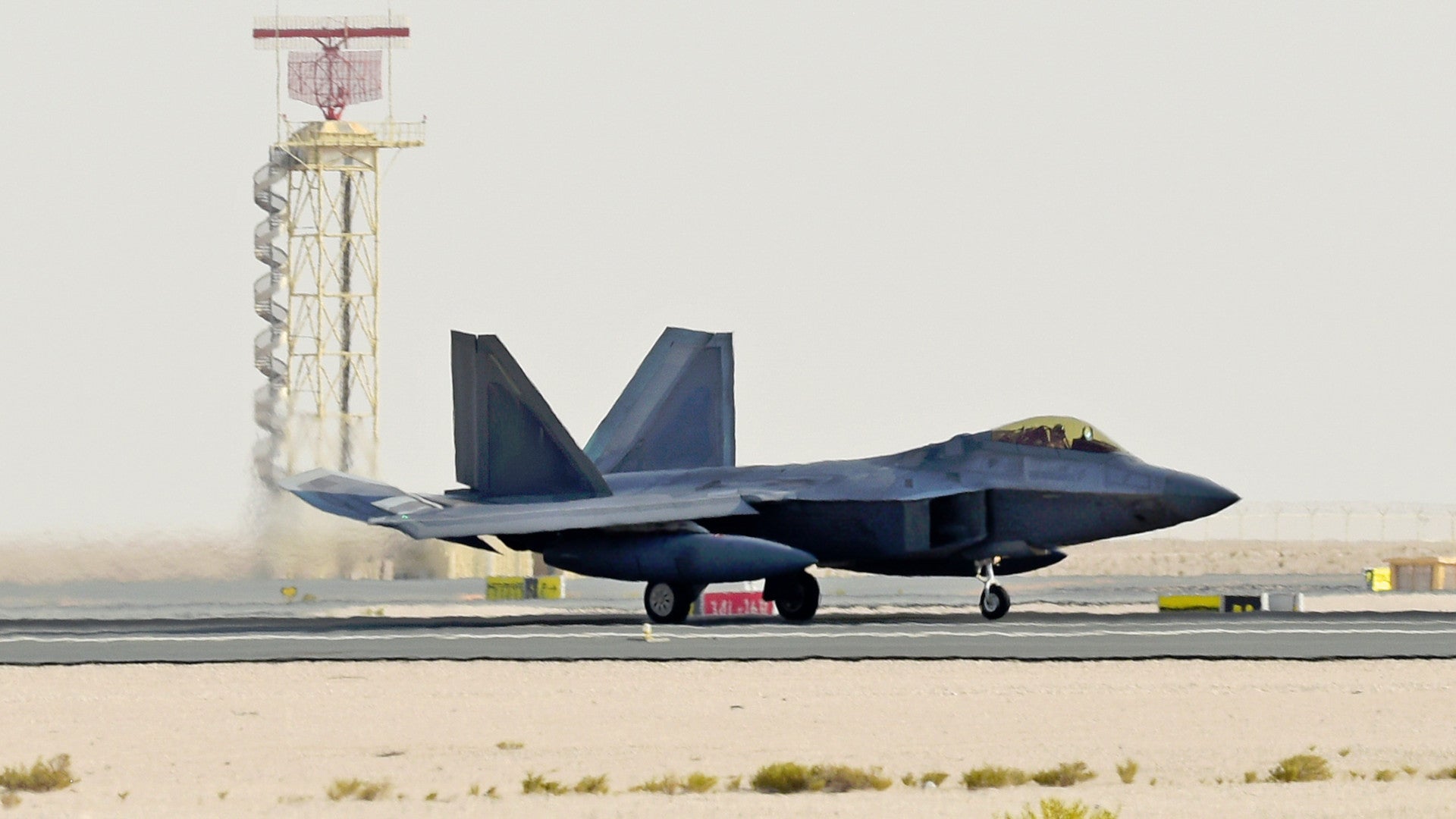The U.S. Air Force has deployed a contingent of F-22 Raptor stealth fighters to Al Udeid Air Base in Qatar for the first time ever. This comes just over a week after the Iranians shot down a U.S. Navy RQ-4A Broad Area Maritime Surveillance-Demonstrator drone, or BAMS-D, flying over the Gulf of Oman. That incident had sent already elevated tensions between the United States and Iran skyrocketing, almost leading to U.S. military strikes on Iranian targets. The U.S. government has since hit the regime in Tehran with new sanctions and is now reportedly looking to put together a new regional military coalition to put additional pressure on Iran.
On June 28, 2019, U.S. Air Force’s Central Command officially announced the arrival of the F-22s at Al Udeid, which had occurred the day before, rather than their typical base of operations in the region, Al Dahfra Air Base in the United Arab Emirates (UAE). The Aviationist had been the first to report that the Raptors were heading to the Middle East after plane spotters noticed them arrive and then depart Moron Air Base in Spain earlier in the week. Online flight tracking software had then picked up a number of KC-10 Extender tankers dragging the stealthy fighter jets across the Mediterranean Sea.
“These aircraft are deployed to Qatar for the first time,” AFCENT’s public affairs office said in an extremely brief statement. They are at Al Udeid “in order to defend American forces and interests in the U.S. Central Command area of responsibility,” it continued.
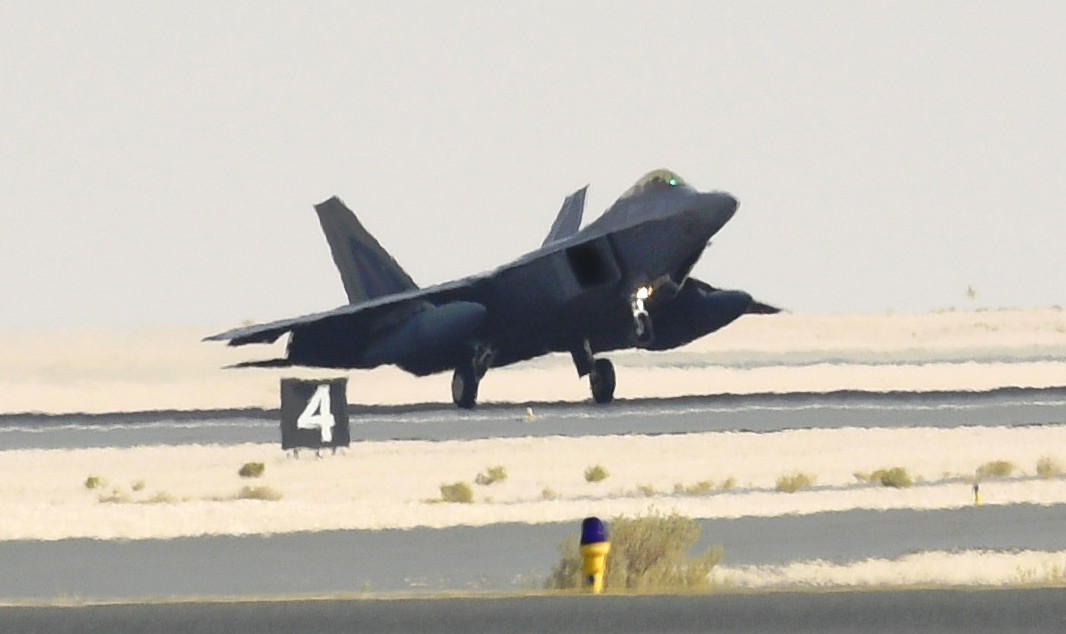
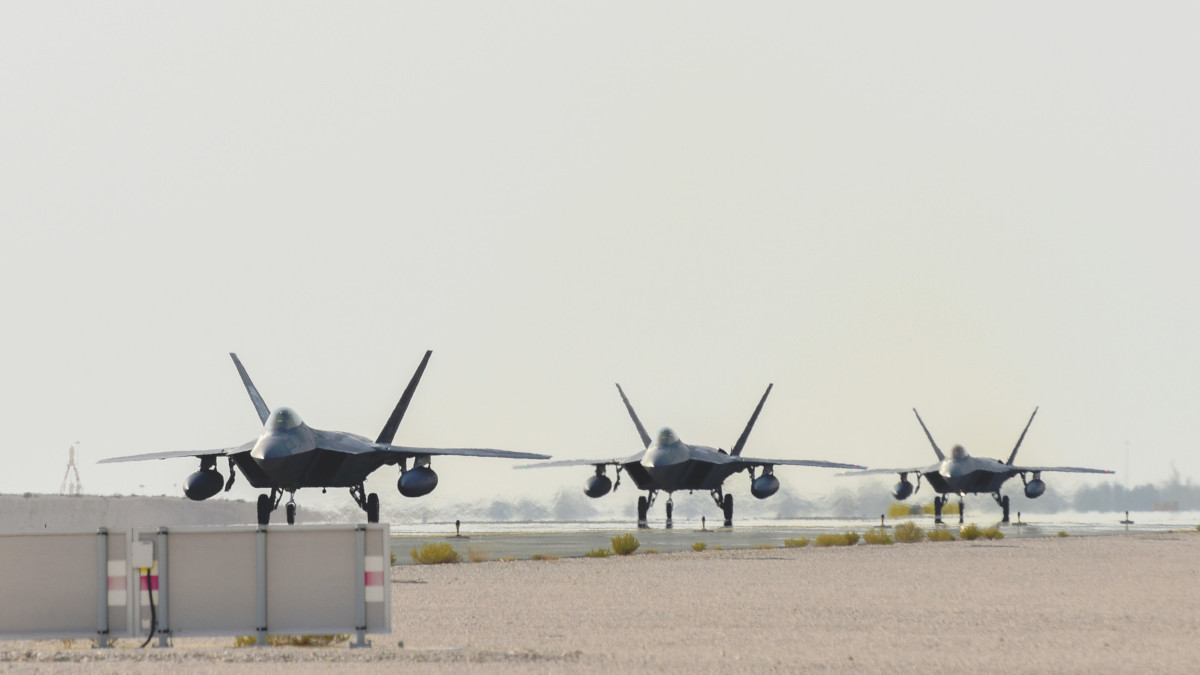
It is unclear how many F-22s are now in Qatar. The Aviationist reported that nine jets, identified as belonging to the Virginia Air National Guard’s 192nd Fighter Wing at Langley Air Force Base, had arrived at Moron between June 25 and 26, 2019, but that only six had departed. Another three remained at Moron, at least initially, after suffering technical issues.
The photos that the Air Force released of the jets arriving in Qatar only show five together at once, though this does not necessarily mean the sixth aircraft wasn’t present, as well. The Aviationist said that its sources had indicated that a dozen F-22s were slated to head to the Middle East in total as part of the deployment.
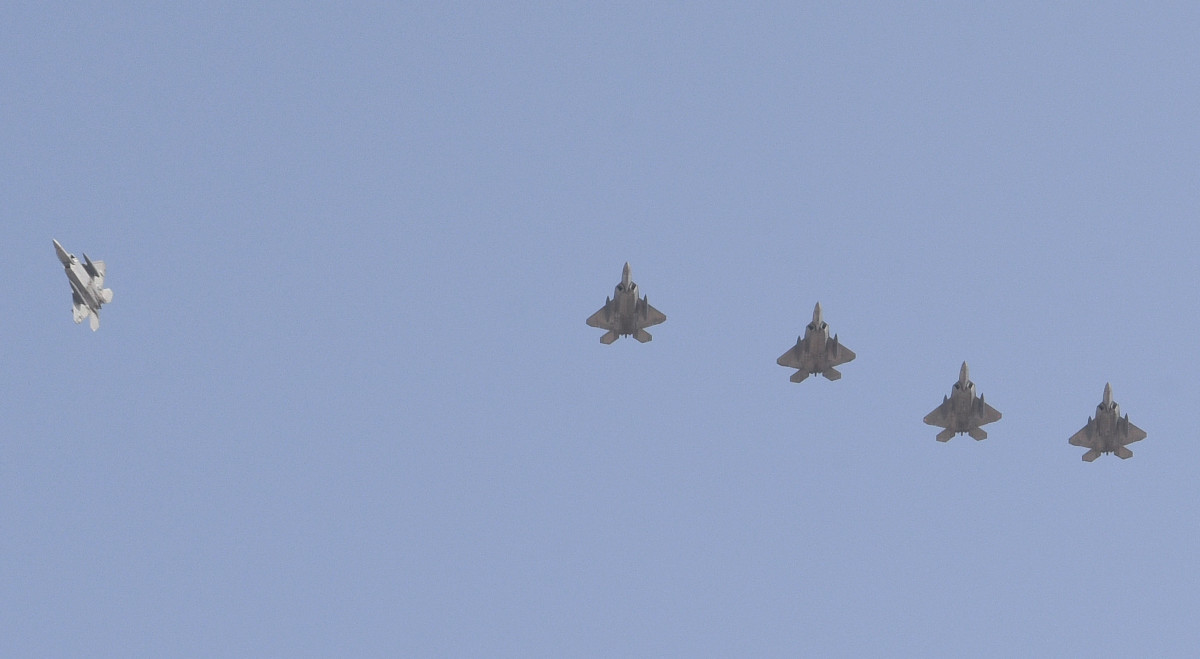
The technical issues the 192nd’s F-22s experienced in transit are not necessarily surprising. Availability rates across the entire Raptor fleet are notoriously low and the Air Force recently publicly admitted that the jets would not reach a Pentagon-mandated target of an average mission capable rate of at least 80 percent by the end of the 2019 Fiscal Year.
In addition to this being the first F-22 deployment to Qatar, this also marks the return of Raptors to the Middle East for the first time since late 2018. Before then, the stealth fighters had regularly deployed to Al Dahfra for years. Sending them back to the region given the current state of affairs makes good sense.
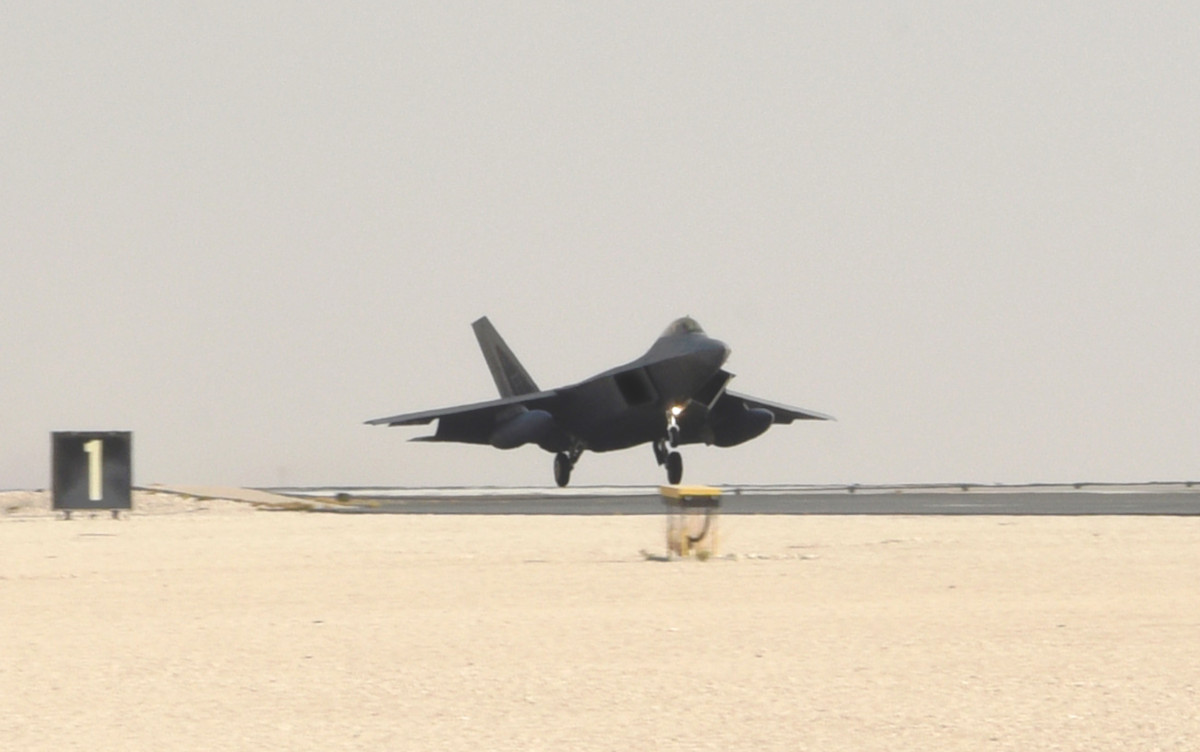
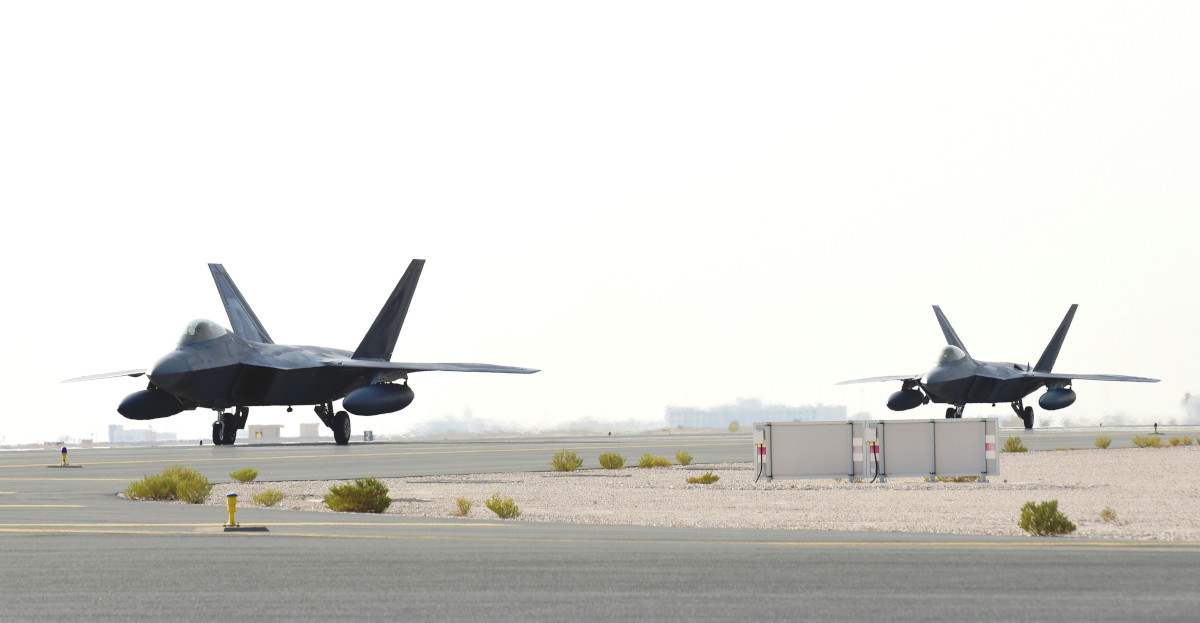
It is worth pointing out that in 2012, after an Iranian Su-25 Frogfoot ground attack aircraft tried to bring down an MQ-1 Predator drone flying over the Persian Gulf, that the Air Force sent F-22s to escort the unmanned planes for a period afterward. Of course, the service already has a number of other options in the region, so this certainly does not automatically mean this deployment is tied directly to the RQ-4A shootdown.
Sometime between late 2018 and early 2019, the Air Force had also sent non-stealthy F-15C Eagles to the UAE to take the place of the F-22s. In April 2019, the service deployed a number of stealthy F-35A Joint Strike Fighters there, as well. Additional F-15Cs had also arrived at an “undisclosed location” in the Middle East in May 2019. Beyond all these fighter jets, F-15E Strike Eagles had arrived at Al Dahfra earlier in June, too, and four B-52s had deployed to Al Udeid the month before.
The F-35s had already helped fill some of the gaps left by the departure of the F-22s, notably being able to perform in the same kind of higher-risk missions, including in areas within the range of Iranian air defenses. They had also brought powerful sensor fusion and data sharing capabilities, enabling them to act as a “‘quarterback’ for the coalition joint force” during larger air operations, U.S. Air Force Chief of Staff General David Goldfein had said at the time. The Raptors had offered similar capabilities in the past and will now offer U.S. commanders in the region additional capacity for these sorts of tasks.
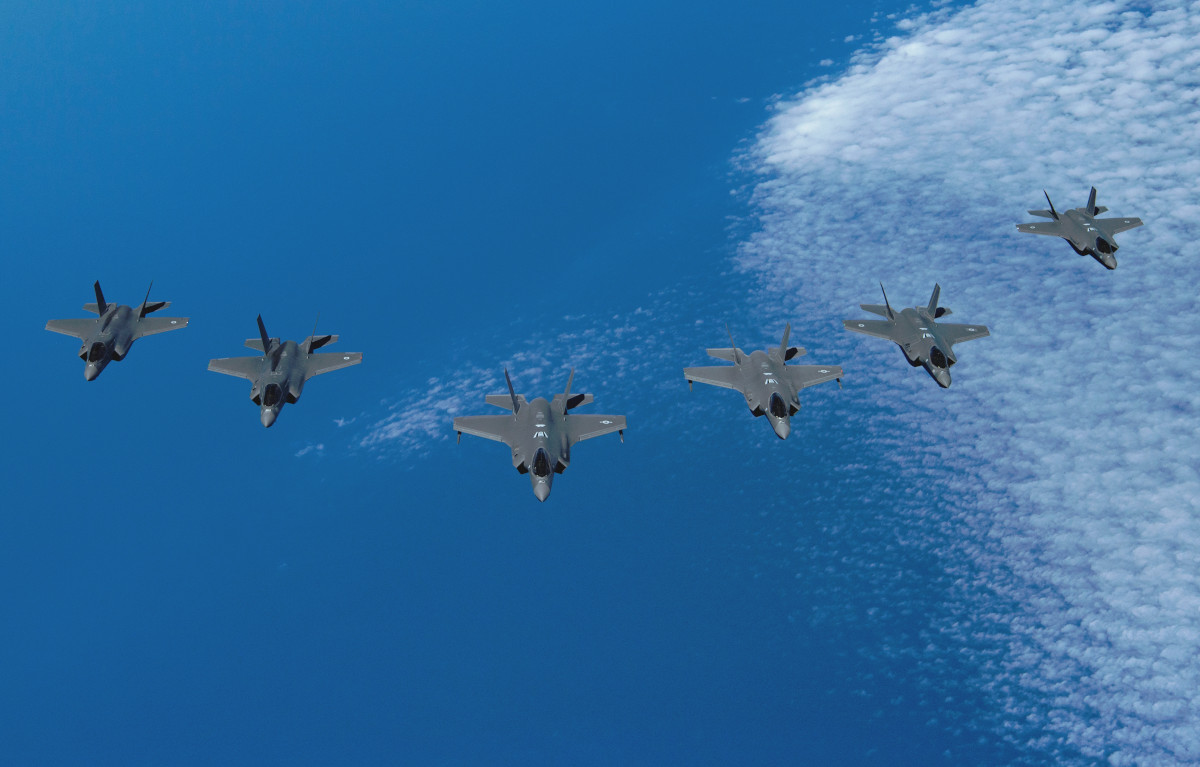
So far, we have only seen the F-35s operating in non-stealth configurations, though. On top of that, the F-22 remains the most capable air-to-air platform in the world. It can also race into enemy territory, including to make precision strikes on targets using precision-guided Small Diameter Bombs and Joint Direct Attack Munitions, in full stealth mode.
Regardless, all of these deployments are part of what has become a steady, if still relatively limited flow of additional U.S. military assets and personnel to the region in response to intelligence that has reportedly indicated an increased risk of threats to American forces and U.S. interests from Iran and its proxies in the region, which first emerged in May. The U.S. government and some of its allies have blamed Iran for a series of attacks on commercial petrochemical tankers in the Gulf of Oman, which the Iranian government denies, despite a growing amount of evidence pointing to their involvement. At the same time, some American allies and partners have implied that the case against the regime in Tehran is still far from concrete.
“Honestly we can’t point the blame at any country because we don’t have evidence,” UAE foreign minister Sheikh Abdullah Bin Zayed Al Nahyan, said during a press conference in Moscow on June 26, 2019, alongside his Russian counterpart Sergei Lavrov. “If there is a country that has the evidence, then I’m convinced that the international community will listen to it. But we need to make sure the evidence is precise and convincing.”
Then came the RQ-4A shootdown, which Iran continues to claim was in response to the drone violating its airspace. The United States has denied this, saying that the unmanned aircraft, as well as a manned P-8A Poseidon maritime patrol aircraft operating in the same area at the time, was in international airspace.
After reportedly aborting U.S. military strikes on Iran, President Donald Trump’s Administration has hit Iran with all-new economic sanctions and says it is continuing to work toward building an “international consensus” regarding Iran malign behavior across the Middle East and beyond. Iran, for its part, has said that the United States needs to ease sanctions before any potential negotiations on de-escalating the situation could begin.
On June 27, 2019, The Wall Street Journal also reported, citing anonymous sources, that the U.S. government was looking to form a new regional coalition, with a third party at its head, that would step up monitoring of Iranian activities using warships and aerial surveillance. This ostensible goal would be to deter future Iranian attacks and to be ready and in position to gather information and evidence about any such incidents that might still occur. The U.S. Navy already leads one multi-national regional task force, Combined Task Force 150 (CTF 150), which has the stated mission of ensuring freedom of maritime movement throughout the Middle East and protecting commercial shipping, though primarily from terrorist threats.
There remains a possibility that further Iranian actions might provoke a more direct U.S. military response, as well. After the RQ-4A shootdown, there were reports that the United States had launched cyber attacks against Iran and was looking at other clandestine options. On June 28, 2019, the Senate also rejected an effort to curtail Trump’s ability to launch strikes without consulting Congress.
“Any attack by Iran on anything American will be met with great and overwhelming force,” Trump had Tweeted out on June 25, 2019. “It doesn’t make any difference. Whatever they want to do, I’m ready,” the President said later that day, implying he was also open to a diplomatic path.
The return of F-22s to the Middle East certainly offers U.S. military commanders in the region more options no matter how the situation continues to evolve in the near term.
Contact the author: joe@thedrive.com
